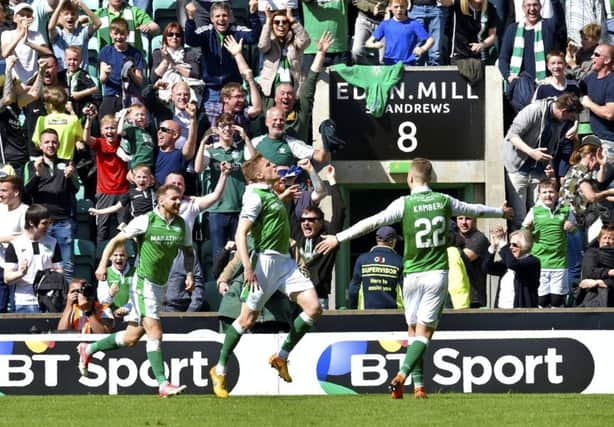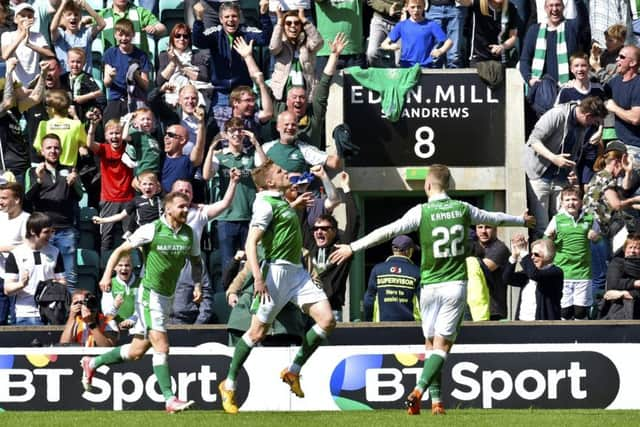Attendances at Scottish football are up '“ will a better TV deal follow?
This article contains affiliate links. We may earn a small commission on items purchased through this article, but that does not affect our editorial judgement.


Average attendances at the six clubs who finished in the top half of the SPFL Premiership in the 2017/18 season are up across the board.
The campaign, which came to a close last Sunday, was typified by the Hibs v Rangers game at Easter Road played in front of a capacity crowd.
Advertisement
Hide AdAverage attendances at the Leith-based club have reached their highest figure in more than 50 years, while the numbers arriving at Ibrox have also risen year-on-year.


The confirmation of Liverpool legend Steven Gerrard as the next Rangers manager will ensure tickets are likely to be in even higher demand next season.
Across Edinburgh, Hearts have also seen average crowds rise thanks to the opening of a newly built main stand which has raised the capacity at Tynecastle Park.
Meanwhile, Celtic continue to enjoy regular sell-out crowds at Parkhead thanks to their dominance of the domestic game.
But despite an obvious public demand for the national sport, there remains a stubborn belief among some observers that Scottish football is being shortchanged - especially compared to the seemingly endless riches on offer to top clubs south of the border.
TV viewing figures for Scottish football plummeted in the 2012/13 season when Rangers found themselves in the old Third Division.
Advertisement
Hide AdAudiences have steadily climbed in recent years, and now, some argue, football’s governing bodies should be ready to cash in.
“However Gerrard’s first season in the dugout pans out, it promises to be utterly fascinating as another huge character enters the unrelenting craziness of the Scottish game,” wrote veteran football writer Keith Jackson.
Advertisement
Hide Ad“If Neil Doncaster can’t drive up a fairer price for the SPFL soap opera in talks with the broadcasters this summer, then he ought to resign from his position on a point of principle.”
Sponsorship and television broadcast partnerships have come under close scrutiny in recent years,
TV deals generate for clubs north of the border pales in significance when compared to the English Premier League (EPL), which signed a deal worth £5.136 billion for UK broadcast rights from 2016-19 with Sky and BT Sport.
The two broadcasters also have live rights for the four divisions of the SPFL until the summer of 2020, in a deal worth a reported £15 million per season - to be shared between the 42 member clubs.
BBC Scotland has a separate deal to broadcast highlights of SPFL matches as well as provide live radio commentary, worth around £1 million a year.
The SPFL is remaining tight-lipped on the prospect of a new TV deal which will take effect from 2020, with discussions with broadcasters on-going.
Advertisement
Hide AdBut not everyone is convinced the so-called Gerrard effect will have a direct impact on the next deal.
“The argument that Gerrard’s arrival is good for Scottish football stacks up because it raises excitement here and awareness and interest levels and potentially willingness to invest from elsewhere,” wrote sports writer Michael Grant.
Advertisement
Hide Ad“When Neil Doncaster next sits with the main broadcasters, and others who might be interested such as new kids on the block Eleven Sports Network, he’ll be negotiating for the next TV deal which begins in 2020. Are we really to believe that by then we’ll be going into a third full season of Gerrard v Rodgers? The smart money should be on one of them having gone by then. Maybe both.”